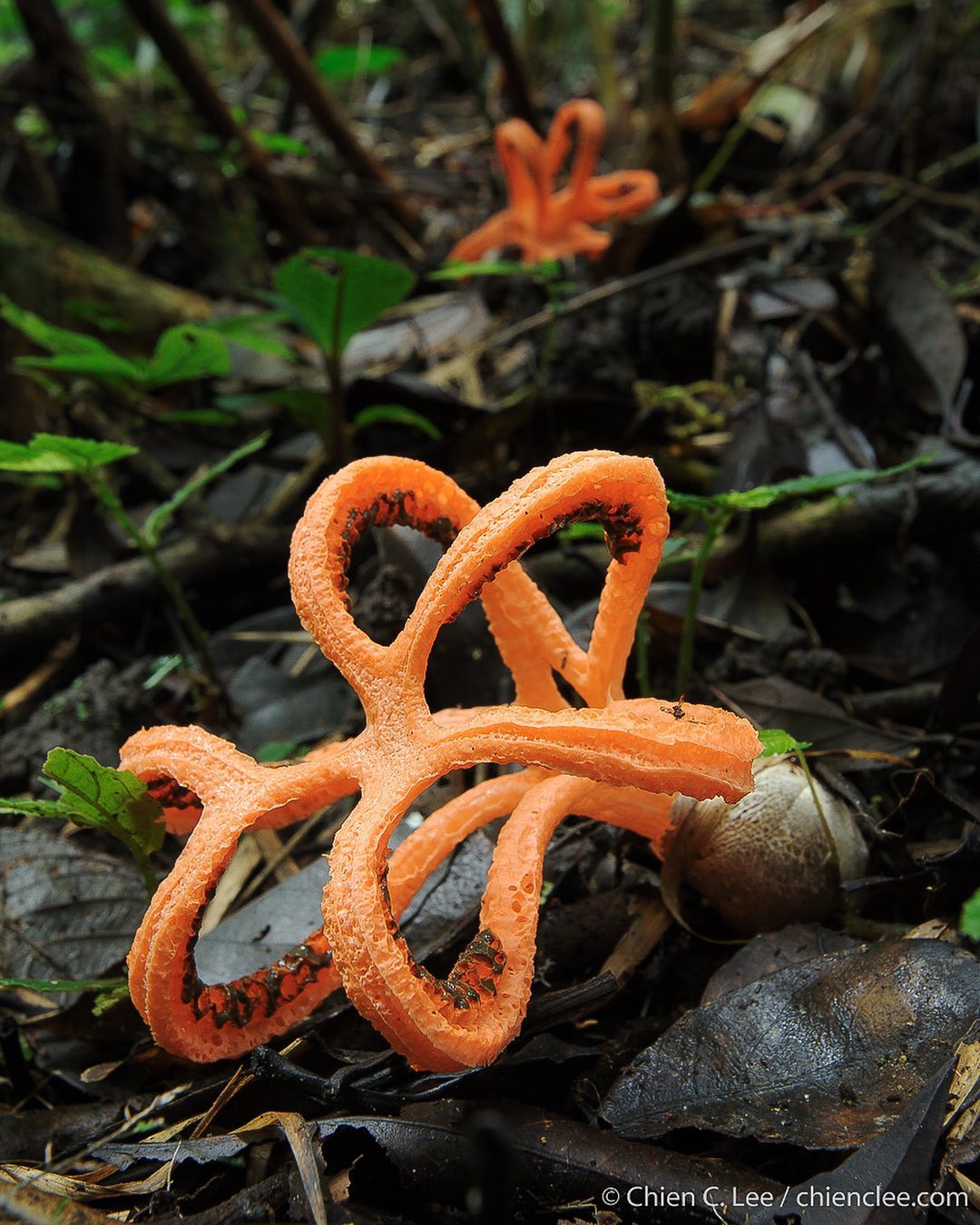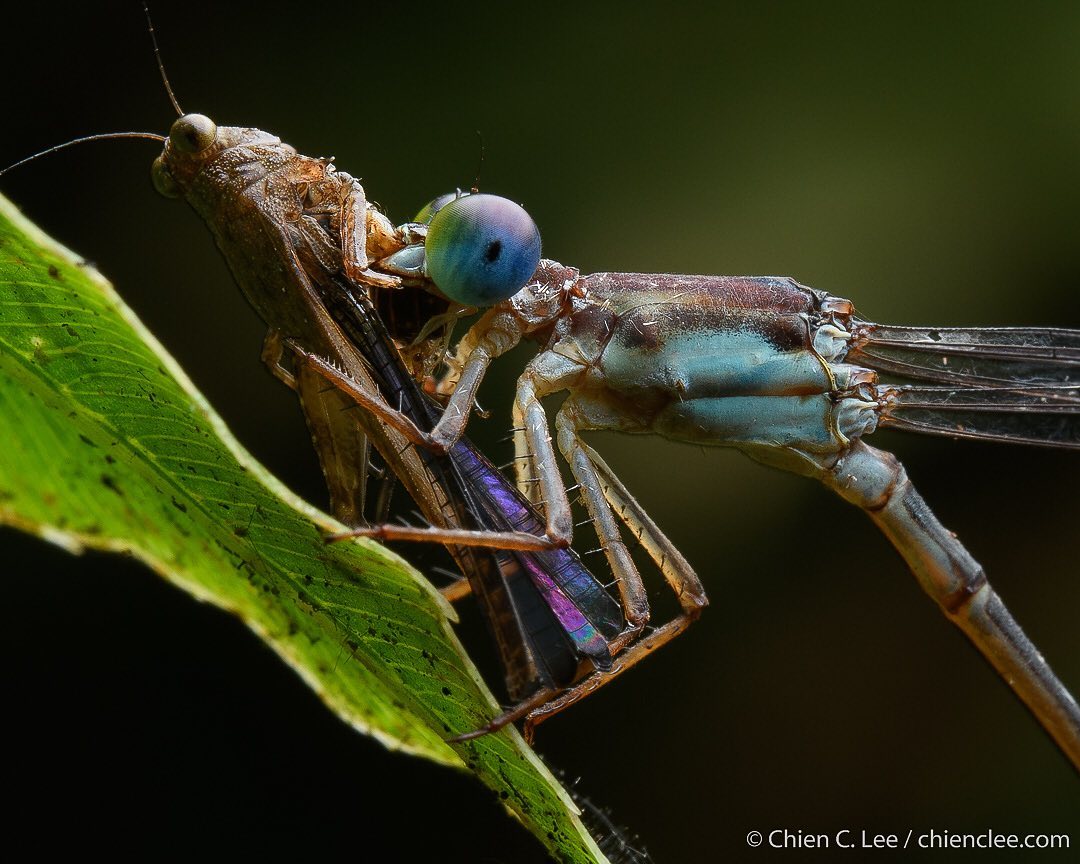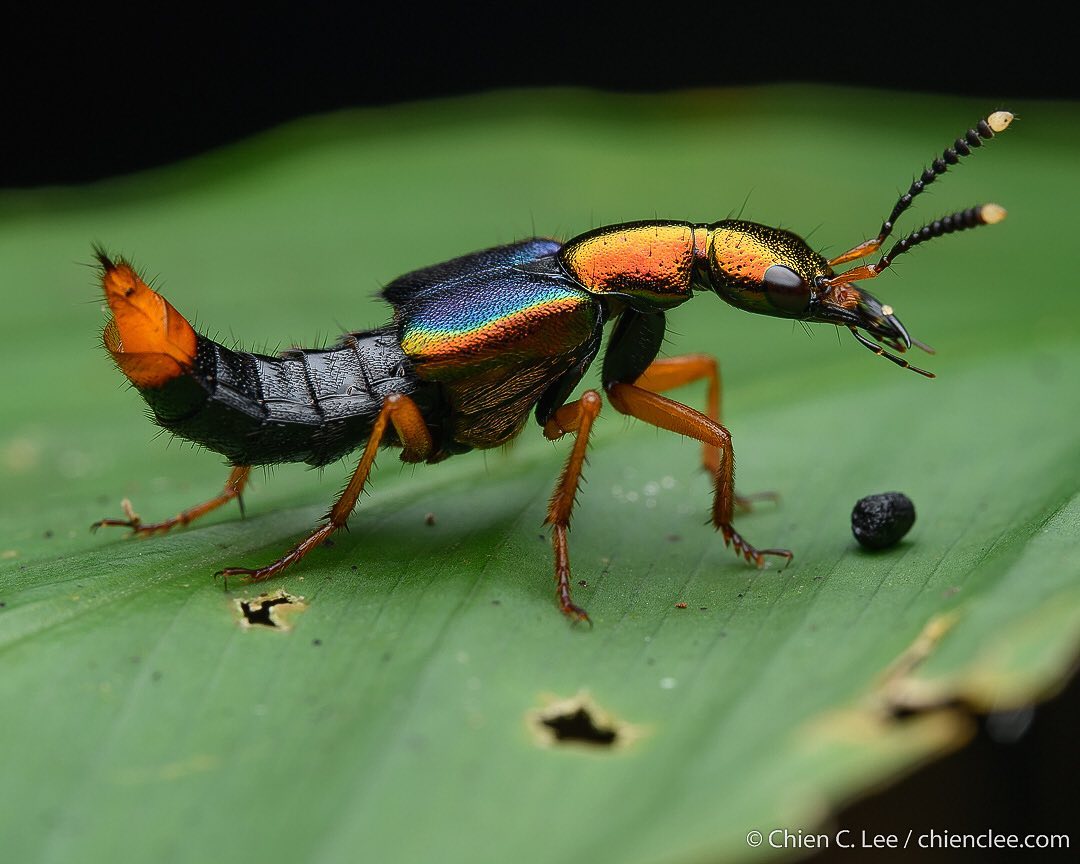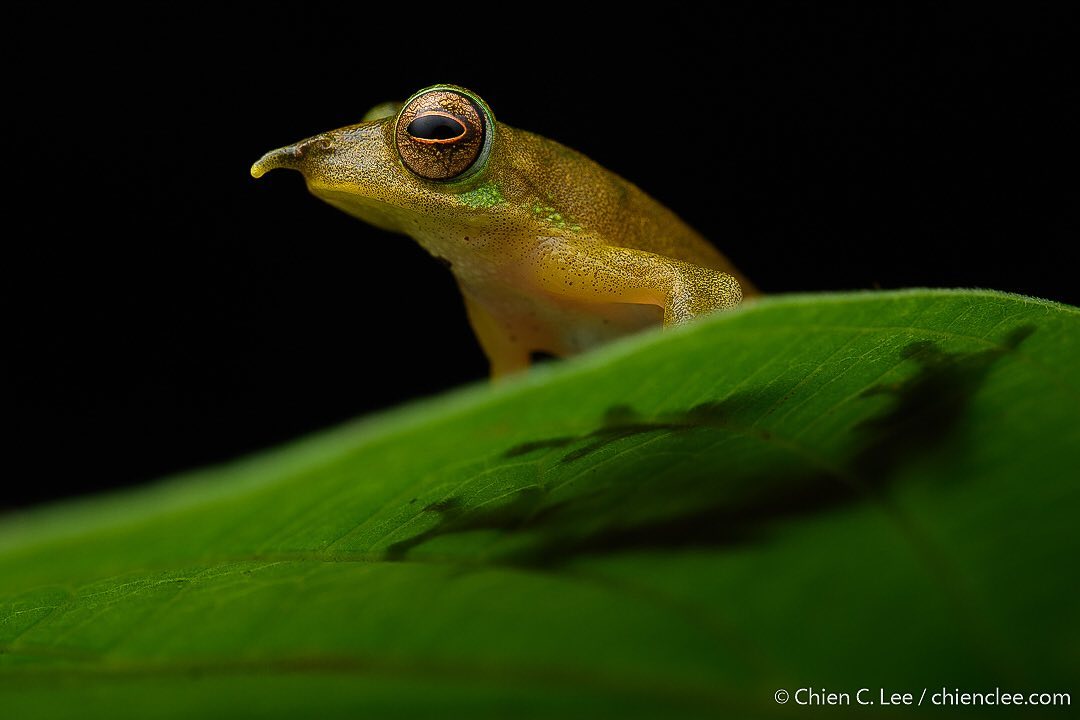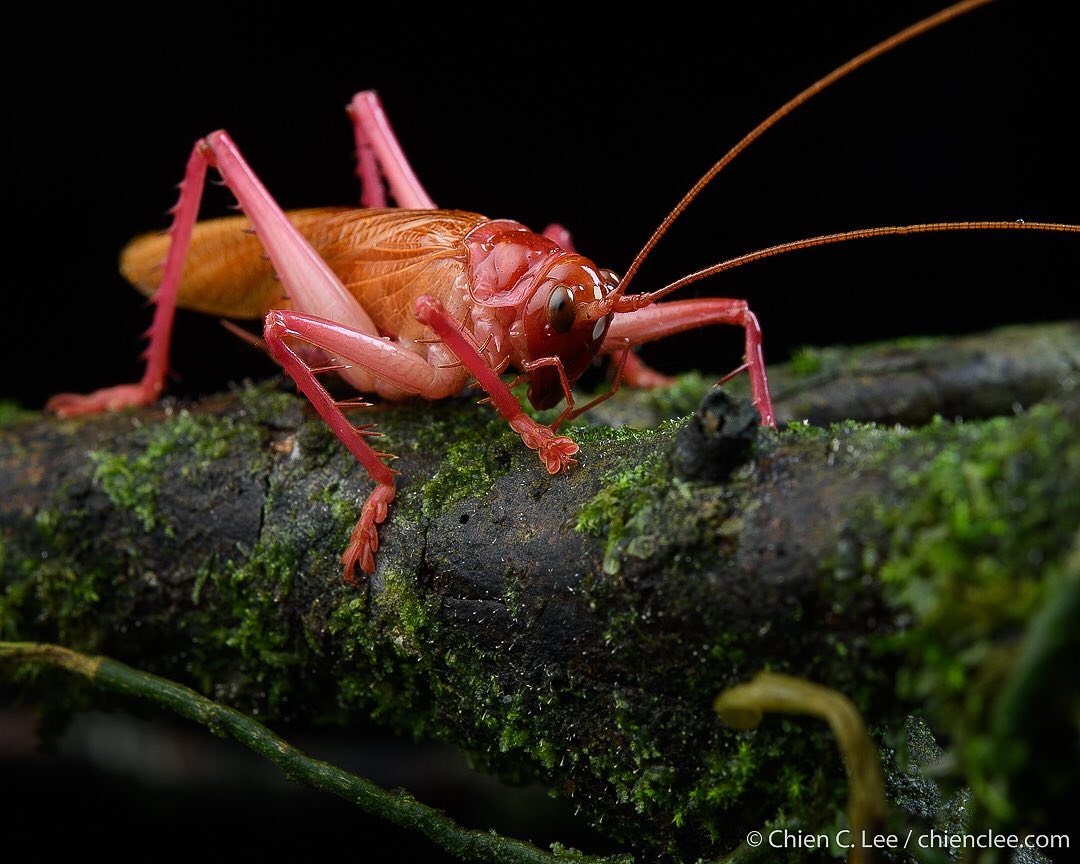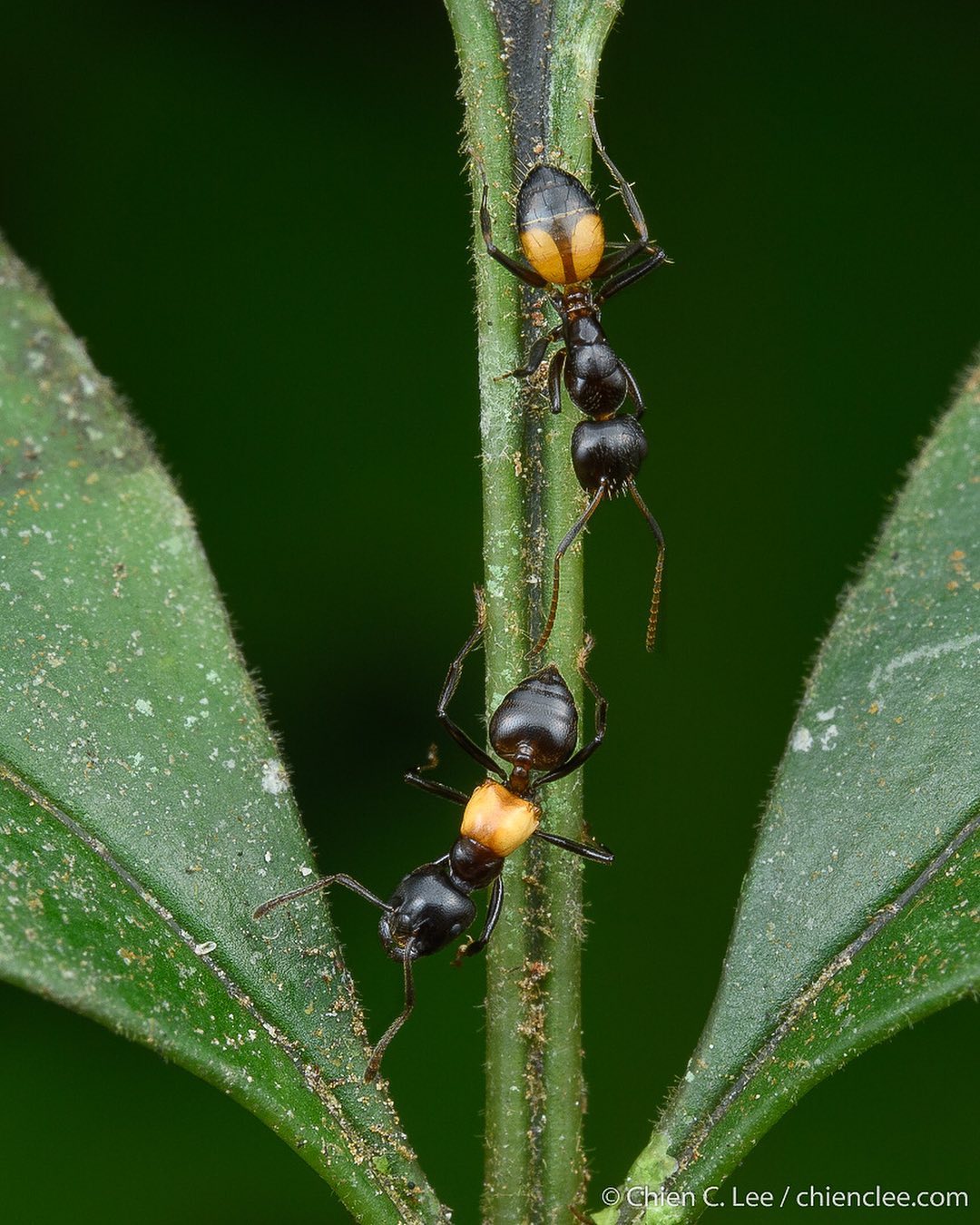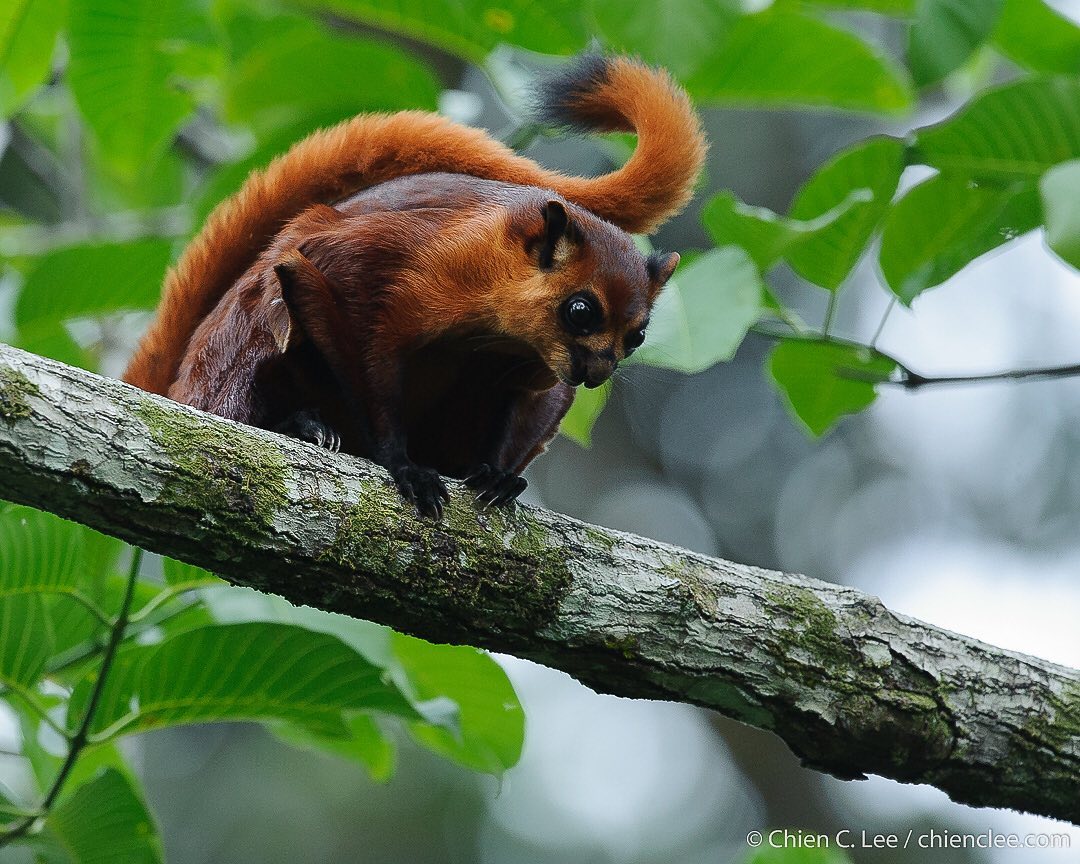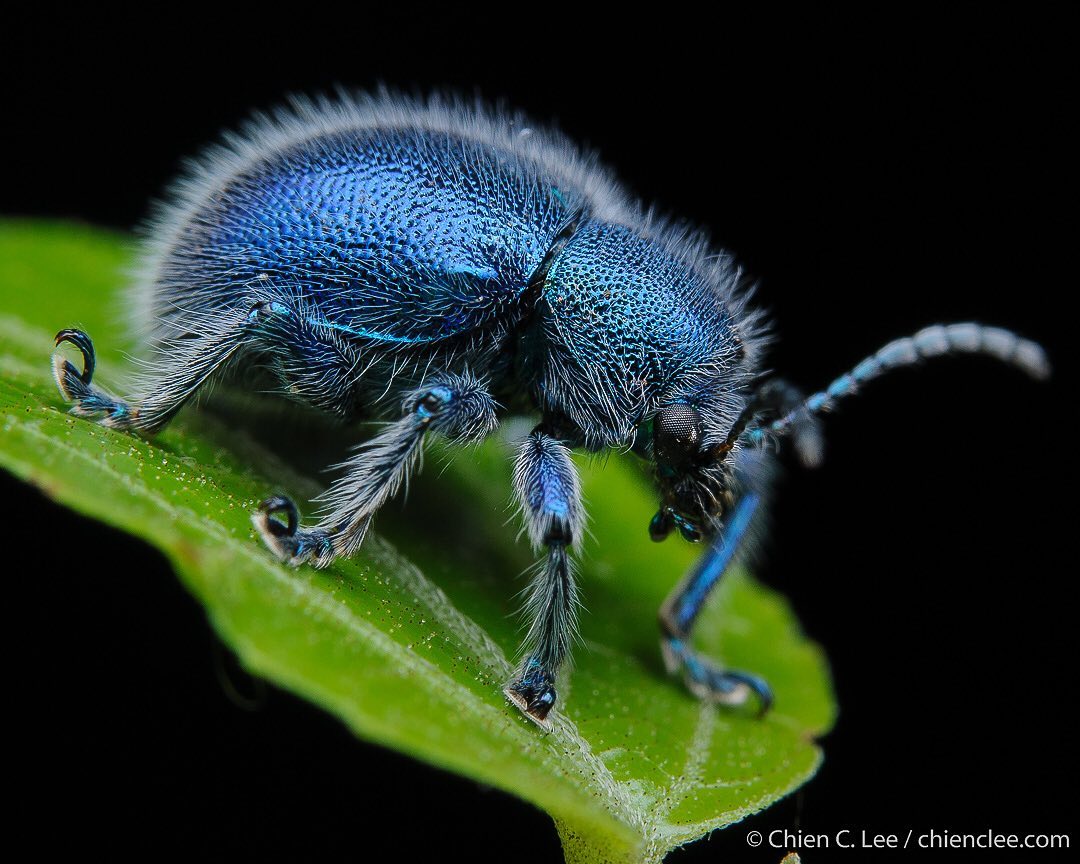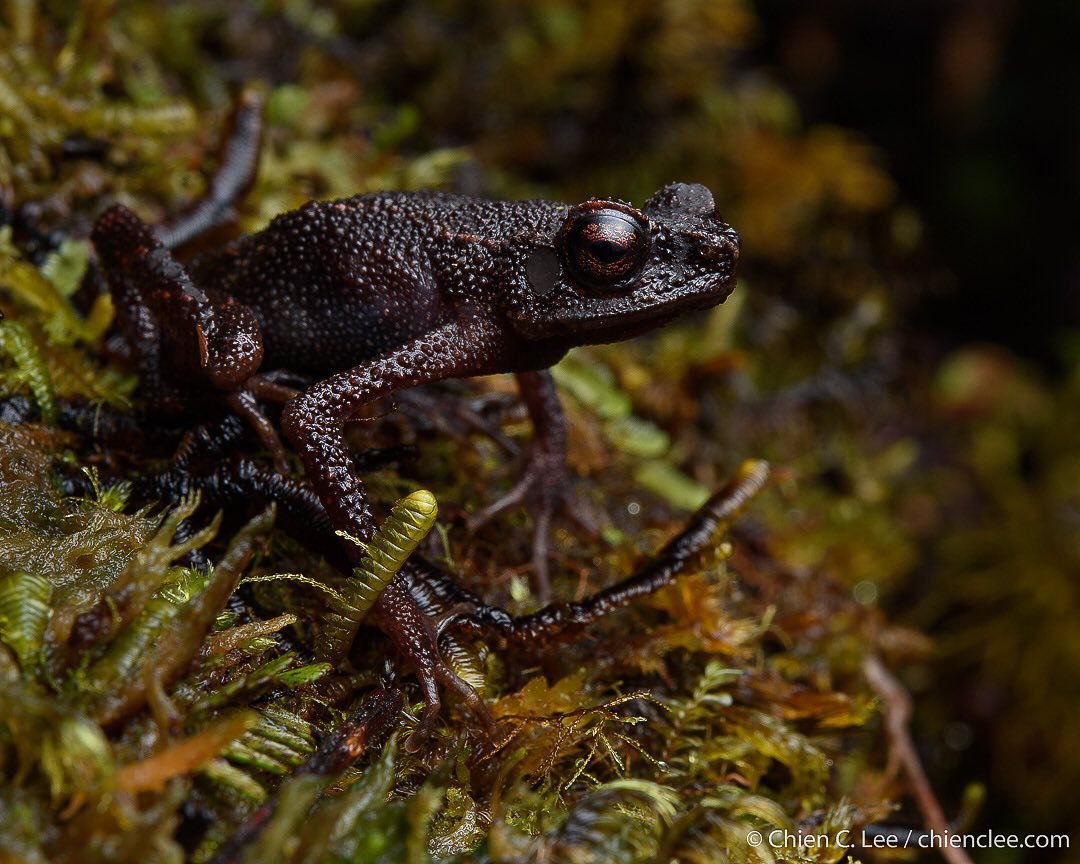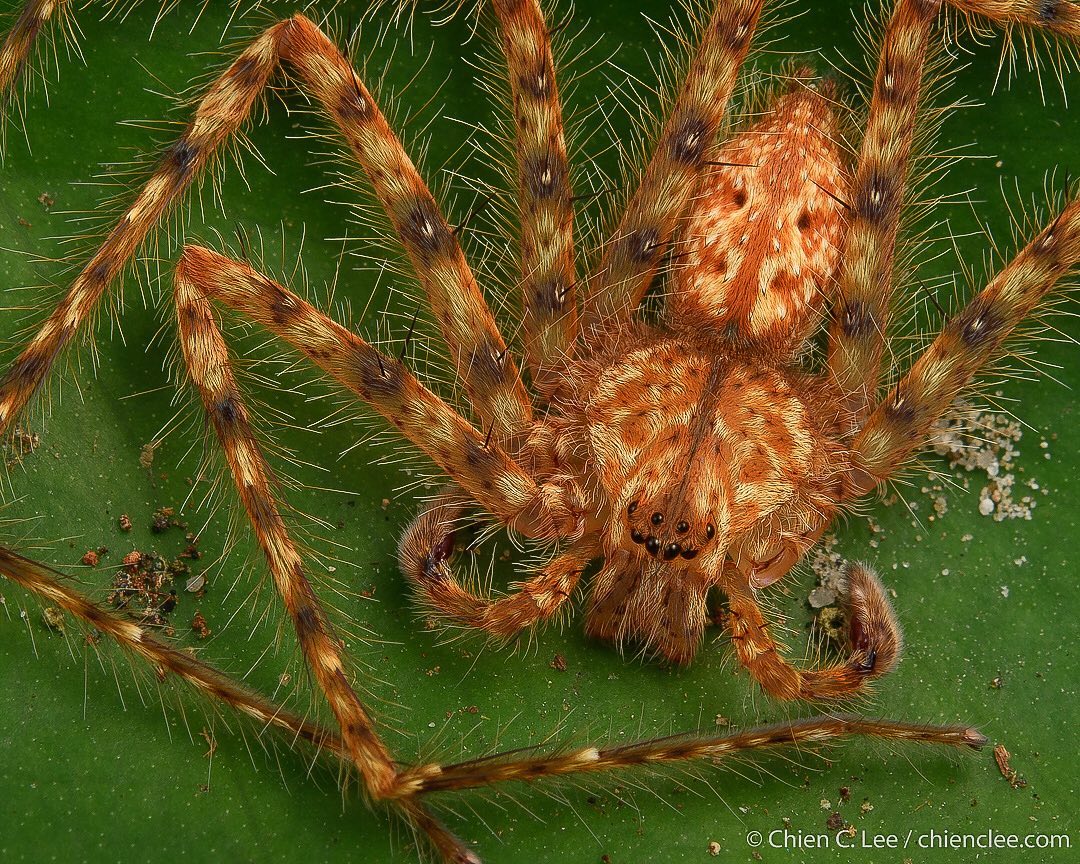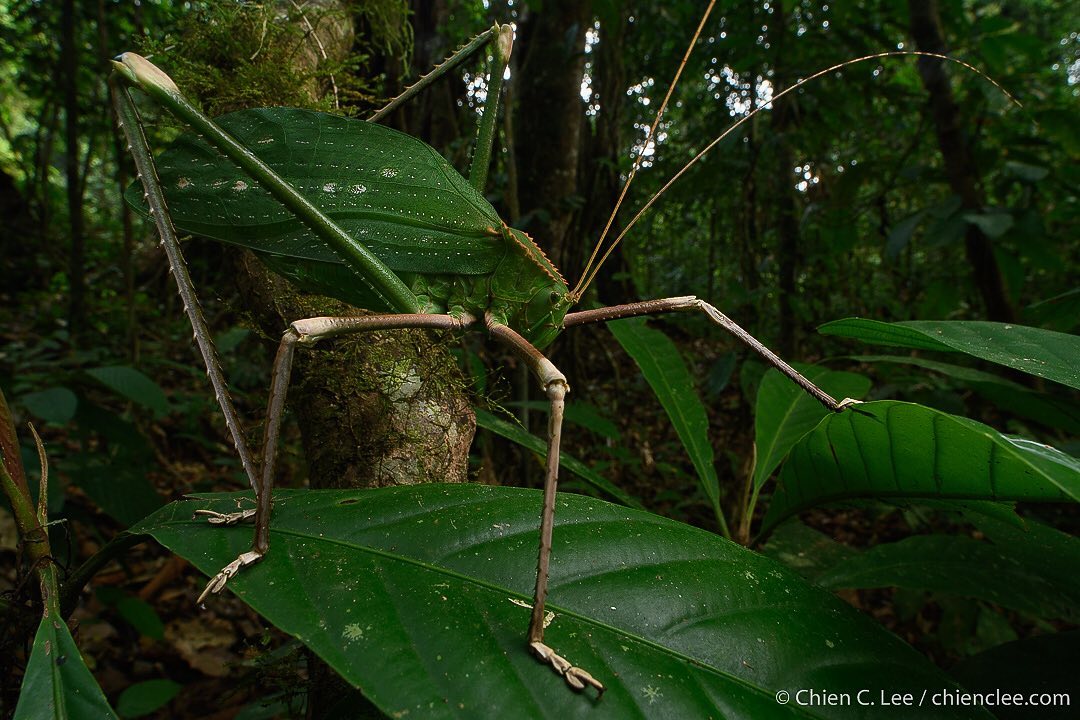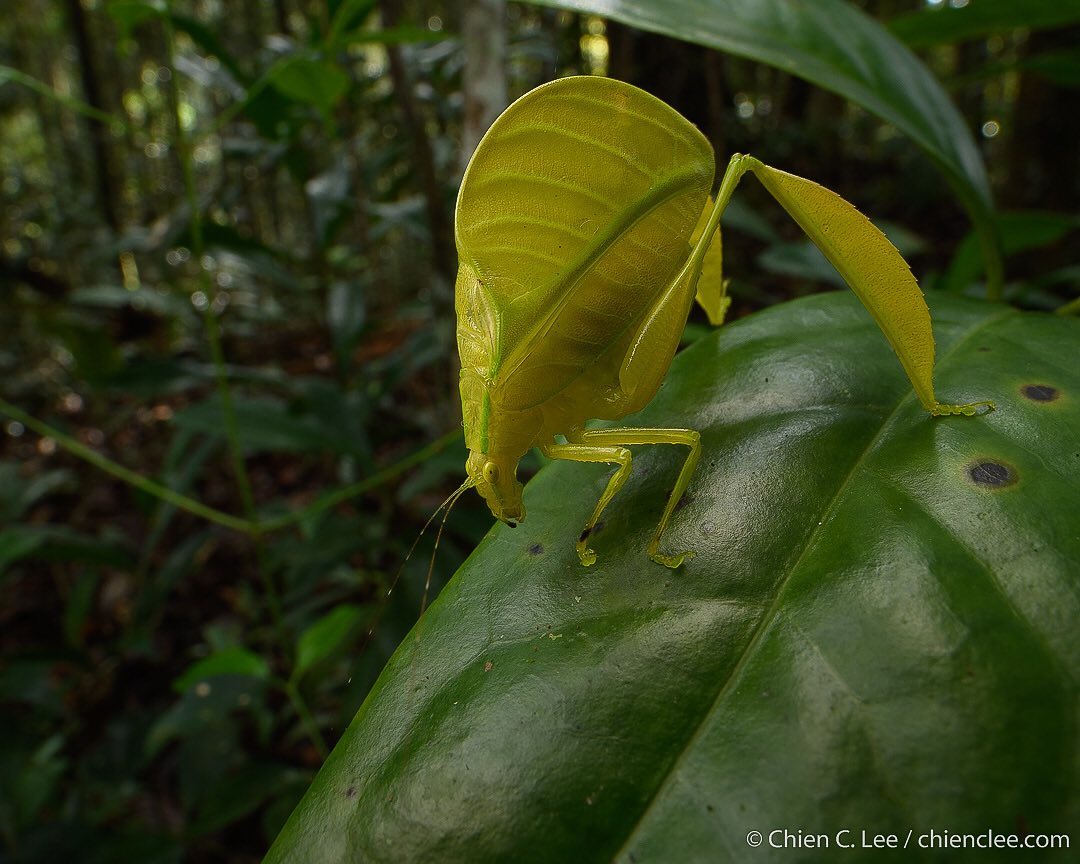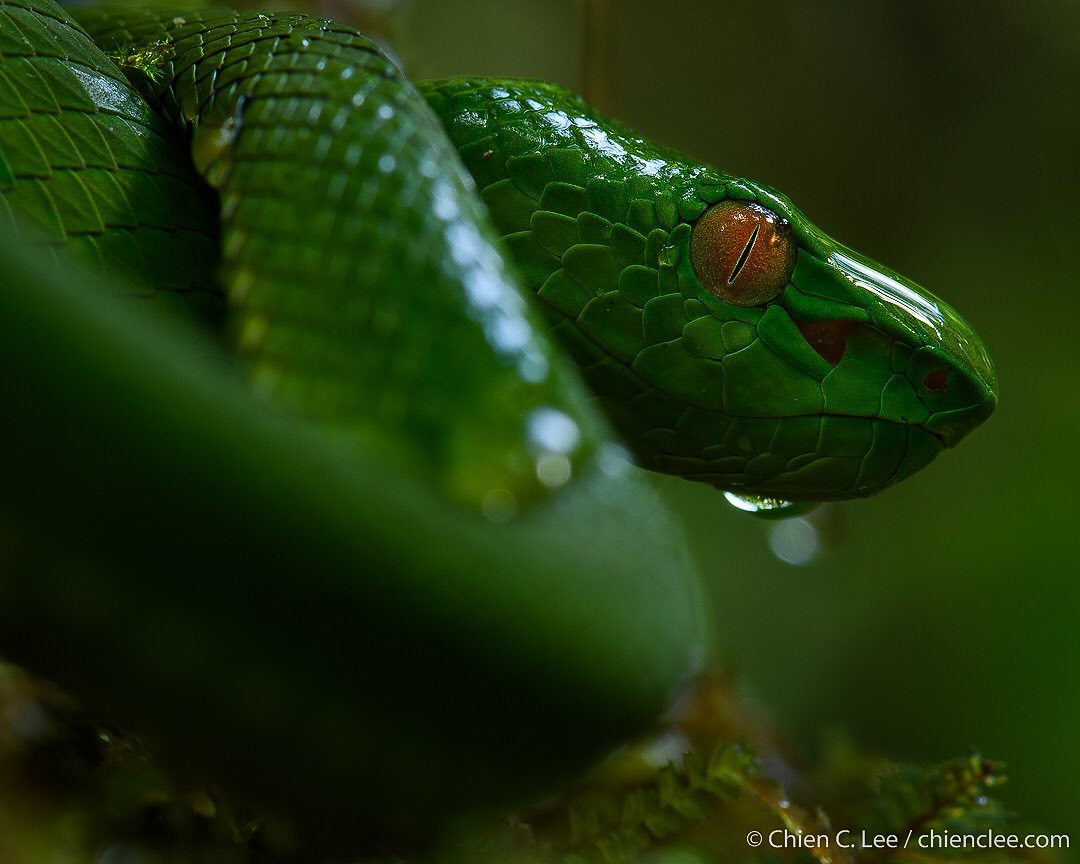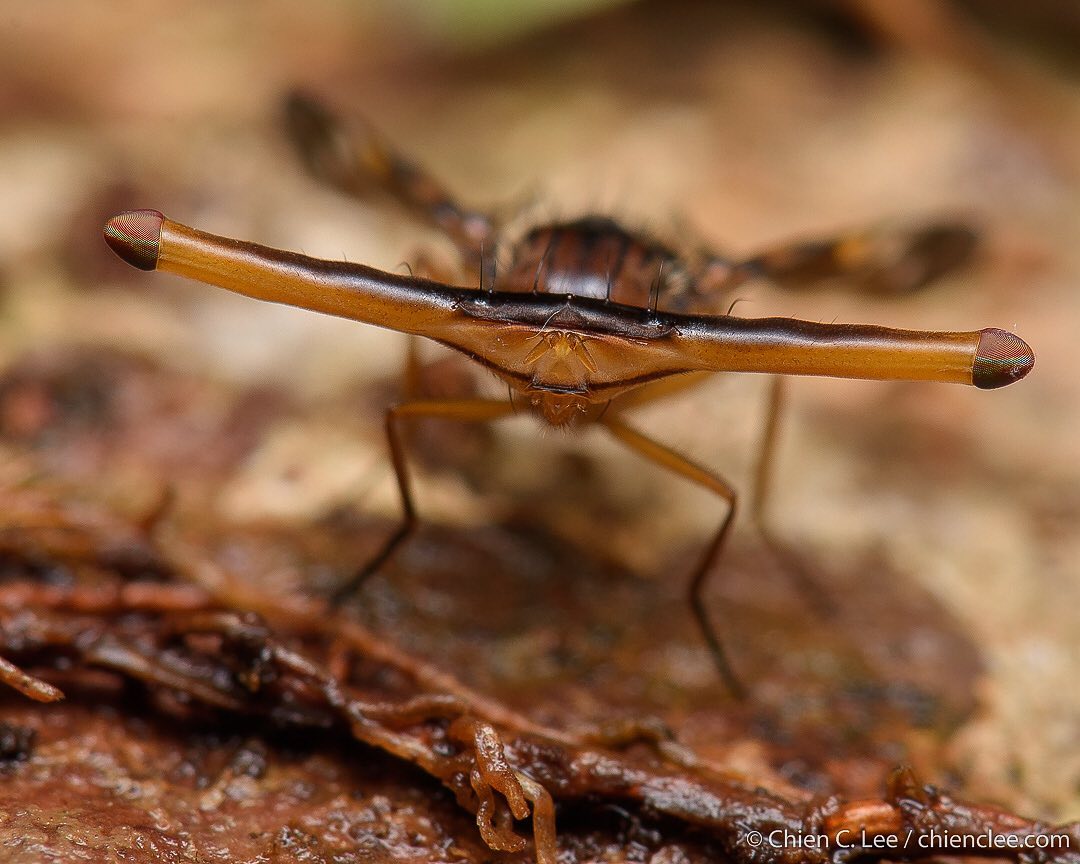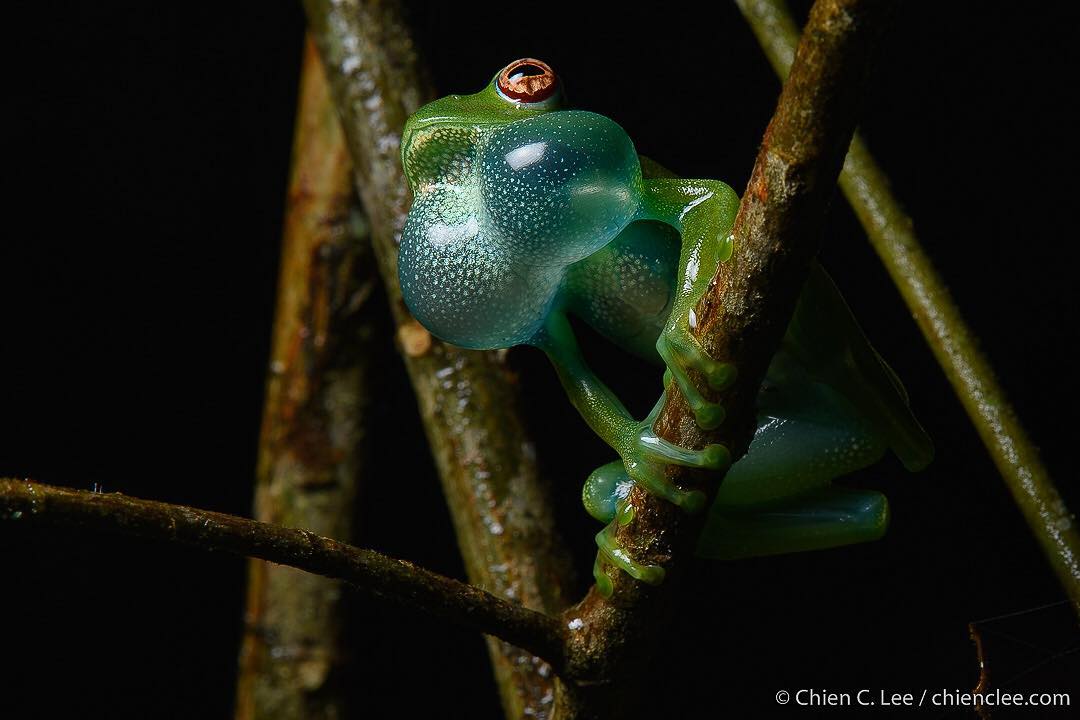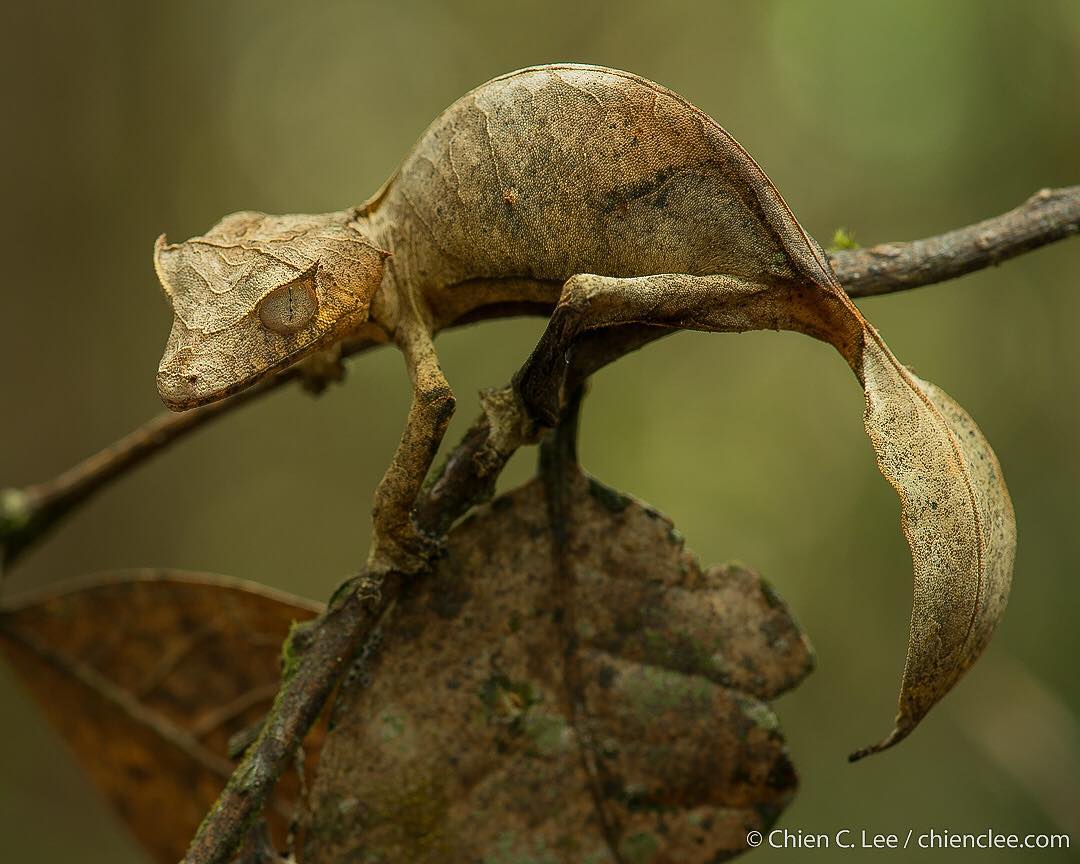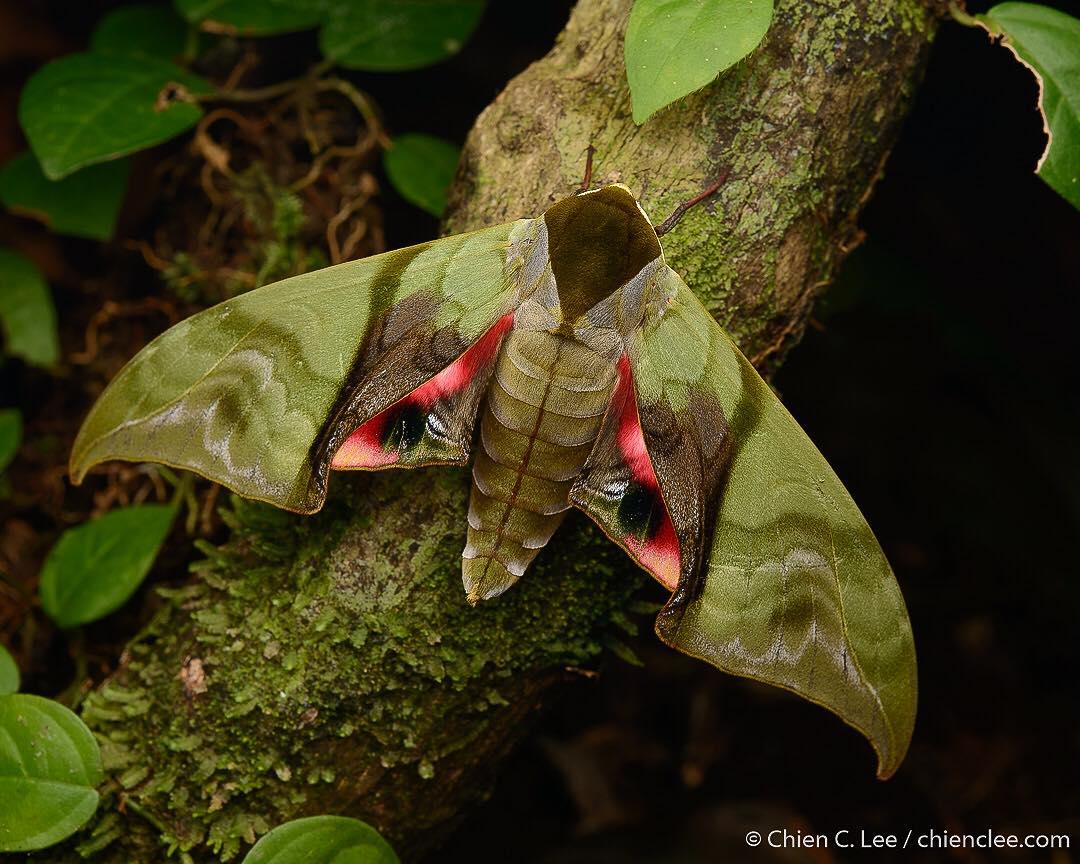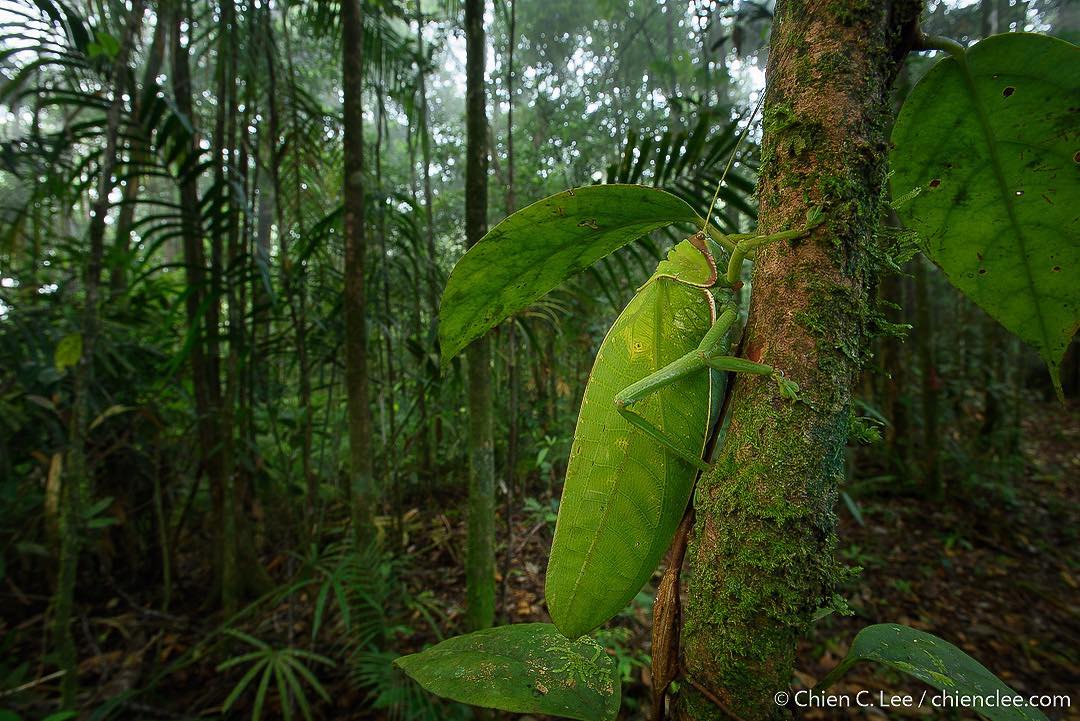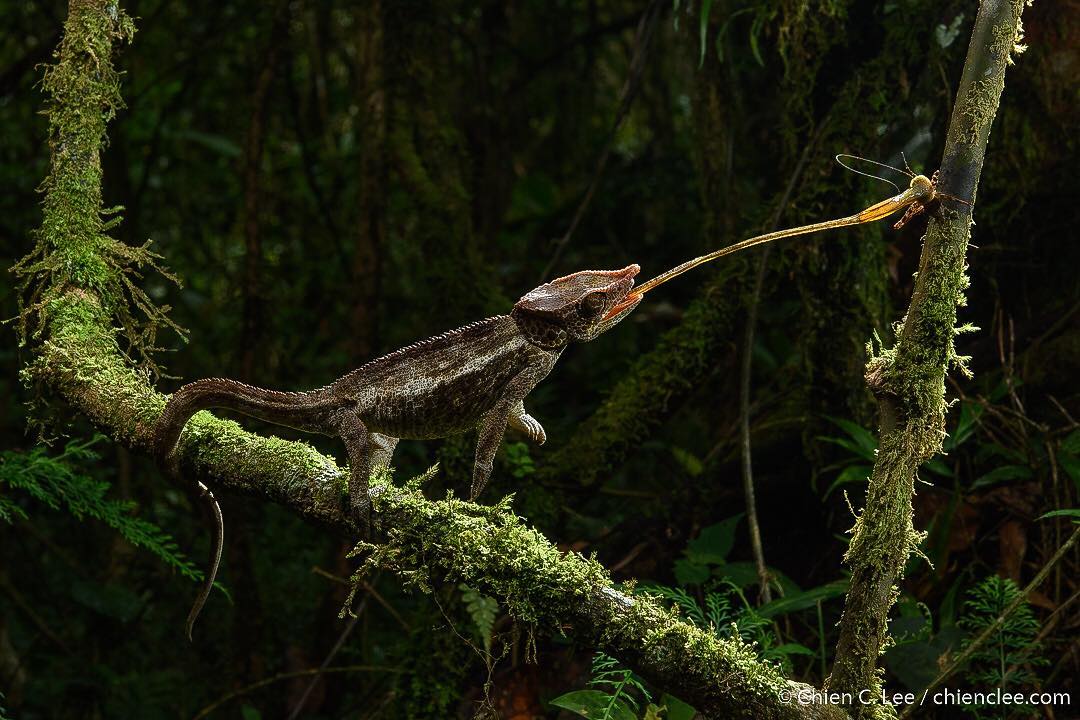Breathtaking Wildlife Macro Photography In The Borneo Rainforest By Chien C. Lee
Outstanding wildlife shots of monsters from the Borneo rainforest by Chien C. Lee, a biologist turned photographer and environmental educator from California who moved to Borneo in 1996. Chien focuses mainly on wildlife, birds, animals, and macro photography.
“My goal as a photographer is to produce images that help to inspire a deeper understanding and respect for our natural world”, he says.
Lee fascinated by the intricate interactions and adaptations of rainforest organisms that showcase the wondrous complexity of these ecosystems.
“One of the most unusual fungi I’ve come across in Borneo’s rainforests is this cage fungus (Clathrus sp.). If only the smelled as nice as they looked! These are relatives of the stinkhorns (Phallaceae) and their name is well deserved. Rather than having airborne spores as most mushrooms, these utilize insects for their dispersal. The putrid rotting scent attracts flies and other insects that inadvertently carry away bits of the sticky brown slime, in which the spores are found.”
More: Chien C. Lee, Instagram h/t: photogrist
“Although seemingly delicate, damselflies are extremely efficient predators. This narrow-winged damselfly (Coenagrionidae) is feeding on a pygmy grasshopper (Tetrigidae) that it has captured in mid-air, in the lowland rainforest of New Guinea.”
“With over 60,000 currently recognized species (and perhaps double that still awaiting discovery), rove beetles (family Staphylinidae) are without a doubt the most diverse family of organisms on the planet. Most are relatively unnoticed because of their often diminutive size and secretive habits, but a few species such as this predatory one (Actinus sp.) are larger and more colorful. I followed this specimen as it scouted leaf surfaces looking for prey – it’s orange-tipped abdomen and metallic coloration are not unlike that of several species of stinging ants it shares its habitat with.”
“Who wouldn’t fall for a nose like this? With a fleshy protuberance on its snout that can hang flaccid or stand stiffly straight, New Guinea’s “Pinocchio Frogs” are as bizarre in appearance as they are rare, and I was very excited to encounter this specimen (Litoria cf. pronimia) in the rainforest yesterday evening. The exact function of its elaborate rostral spike isn’t yet known, but being only found in the males it likely has something to do with mate selection.”
“A stunningly colored raspy cricket (Echidnogryllacris sanguinolenta) from the rainforest of eastern Madagascar. Often confused with either true crickets or katydids, raspy crickets comprise their own family (Gryllacrididae) and are remarkable for their ability to produce silk from their mouthparts – an adaptation rivaling that of silkworms. They use their silk to fasten leaves together to make shelters in which to rest during the day. Being predators, they emerge at night to hunt for other insects and spiders.”
“Although many small insects disguise themselves as ants to take advantage of their unpalatability, mimicry by another ant species is quite a rare occurrence. At a quick glance the two ants in this photo appear the same, especially while they are quickly scurrying down a stem, but closer inspection reveals that in fact there is a clever deception taking place. The ant at the bottom is Crematogaster inflata, an uncommon species from the rainforests of Borneo, which is distinctive in having a swollen orange metathorax. Its glands can exude a toxic sticky fluid as a defense and predators thus tend to avoid this species, heeding its bright warning coloration. At top is a relatively harmless Camponotus ant (actually an unnamed species) that mimics the Crematogaster in size, shape, and color – although its orange coloration is found on its abdomen rather than its thorax. Observations of this species are rare but curiously, these Camponotus mimics have only ever been observed in close proximity to colonies of Crematogaster inflata. The exact nature of their association and whether or not these mimics derive other advantages from their toxic models is still unknown.”
“Borneo’s rainforests are home to more species of gliding animals than anywhere in the world. Why? Evidence seems to point at the role of the most dominant tree family: Dipterocarpaceae. With very infrequent fruitings and few lower branches, animals need a way to cover large distances in the forest more efficiently. The flying squirrels are a great example, and with 14 species Borneo is the world centre of their diversity. This is the largest, the Giant Red Flying Squirrel (Petaurista petaurista).”
“Although often overlooked because of their diminutive size, leaf beetles (family Chrysomelidae) come in an astounding diversity of shapes and colors, with an estimated 50k species worldwide. The exact number of species in Borneo is still a matter of conjecture as, even though these beetles have been intensively studied for the past 30 years, each successive research trip yields many new species. This is the luxuriantly hairy Trichochrysea hirta.”
“It may not look fancy, but this is one of Borneo’s rarest amphibians. The critically endangered Widow Slender Toad (Ansonia vidua) is so named not only for its black color but also because, curiously, only females have ever been found. This frog is endemic to the wet and chilly summit of Sarawak’s highest mountain, a habitat that is almost continually drenched in fog. With no records from anywhere else on the planet, this species’ entire existence depends on the remaining integrity of this small area.”
“Even though he’s missing a few legs, this beautiful long-haired huntsman spider (Gnathopalystes sp.) seems to be getting by just fine. While spiders normally have remarkable regenerative powers – growing back missing limbs slowly with each successive shedding of their skin, this particular individual is an adult male (as told by his enlarged pedipalps, the front pair of appendages on either side of his head) and as such he is near the end of his life cycle. With no more future molts ahead of him, his only objective now is to find a mate before his time is up.”
“Monsters do exist – at least in the Borneo rainforest. Another of the island’s amazing katydids, this is the Malaysian Giant Katydid (Arachnacris corporalis), one of the world’s largest insects (measuring 15cm in length without the wings open). Despite their alarming size they are rather gentle herbivores, that is unless you make the mistake of trying to grab one with your bare hands. Kicking with their powerful spiny hind legs they can inflict some serious pain, but at least they usually warn predators first by emitting very loud raspy clicks with their wings.”
“With some of the most incredible leaf mimics on the planet, it’s hard not to fall in love with Borneo’s katydids (bush crickets of the family Tettigoniidae). Not only do their calls make up a large portion of the nocturnal chorus of the forest, but these insects are extremely diverse in Borneo and it’s no wonder that new species are being found every year. This is another shot of Eulophophyllum lobulatum, described in 2016 and still a poorly documented species.”
“An endemic of Borneo, the Sabah Pit Viper (Popeia sabahi) is one of the prettiest of our venomous snakes, easily differentiated from other green vipers on the island by its distinctive red eye. It appears to favor the cooler montane forests – this specimen was resting coiled on the side of a mossy tree and had just been drenched by a passing rain shower. Photographed using only natural light.”
“A male hammer-headed fruit fly (Themara sp., family Tephritidae) showing off his exaggerated eye stalks. He will use these to seduce female flies that enter his territory, typically a small patch on a fallen log near the rainforest floor. Superficially resembling the true stalk-eyed flies (family Diopsidae), these are otherwise unrelated and represent a excellent example of convergent evolution.”
“Rarest and arguably the most beautiful of Borneo’s gliding amphibians, this is the Bornean Flying Frog (Rhacophorus borneensis). This unusually large and dark morph was found in eastern Sabah, where the frogs had descended from the rainforest canopy to lay eggs in a small muddy pool.”
“Originating from a single common ancestor about 60 million years ago, Madagascar’s Mantellid frogs have radiated into a wide diversity of forms. Some are adapted for streams, others for leaf litter, and still others, such as this calling Ankafana Bright-eyed Frog (Boophis luteus), for a life in the trees.”
“The incredible mimicry of the Satanic Leaf-tailed Gecko (Uroplatus phantasticus) is perfectly tailored for its particular microhabitat in the rainforest. While many of Madagascar’s other leaf-tailed geckos conceal themselves on the vertical trunks of trees, this species maximizes its camouflage by hiding among dead foliage, sometimes even in plain sight.”
“Although this sphinx moth (Callambulyx rubricosa) is perfectly camouflaged against green foliage when it is resting, any disturbance from an animal will prompt it to flash its brightly colored hind wings and suspicious-looking eyespots. This startle tactic is the insect’s only defense against predators and is a common coloration theme found in many moth species.”
“A giant leaf katydid (Pseudophyllus hercules), one of the world’s largest, rests in the Borneo rainforest understory. Active only at night, they use their superb camouflage to remain undetected by predators during the day.”
“With a tongue longer than its body and saliva 400 times stickier than a human’s, a Cryptic Chameleon (Calumma crypticum) snags an unwary cricket with perfect accuracy. Madagascar is home to the greatest concentration of the world’s chameleon diversity, including both the largest and smallest species. They are such efficient hunters that they can grow with remarkable speed for a reptile, some reaching maturity and completing their life cycle in less than a year.”
